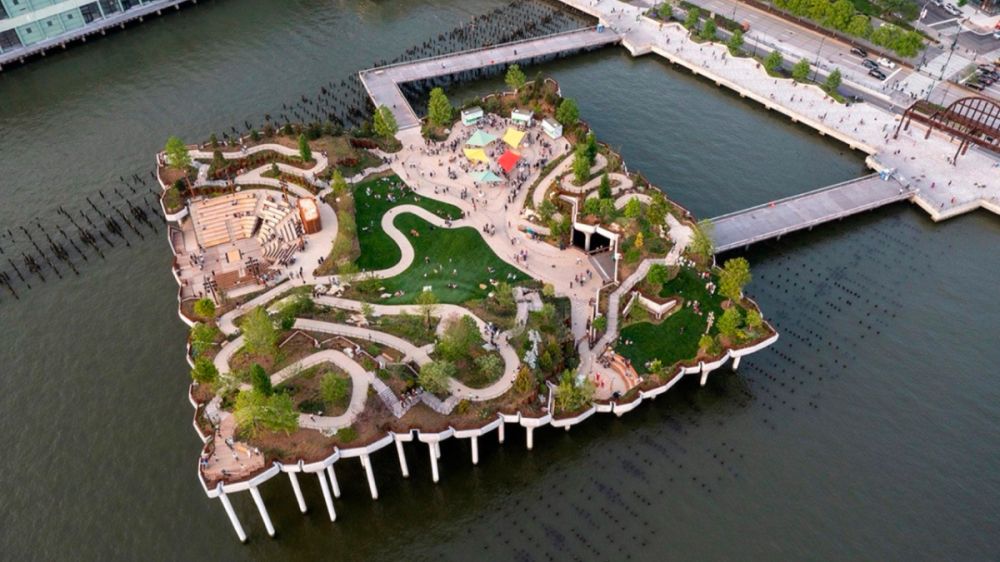Creating Outdoor Spaces That Build Community
May 12th, 2025
Outdoor spaces hold incredible potential to transform communities. Public parks, plazas, and greenways are more than recreational amenities—they are catalysts for connection, well-being, and identity. In the Northeast, where urban density and changing landscapes create unique challenges and opportunities, designing outdoor spaces that foster community is both an art and a science. By focusing on inclusivity, sustainability, and the natural integration of design elements, landscape architects can create spaces that bring people together in meaningful ways.
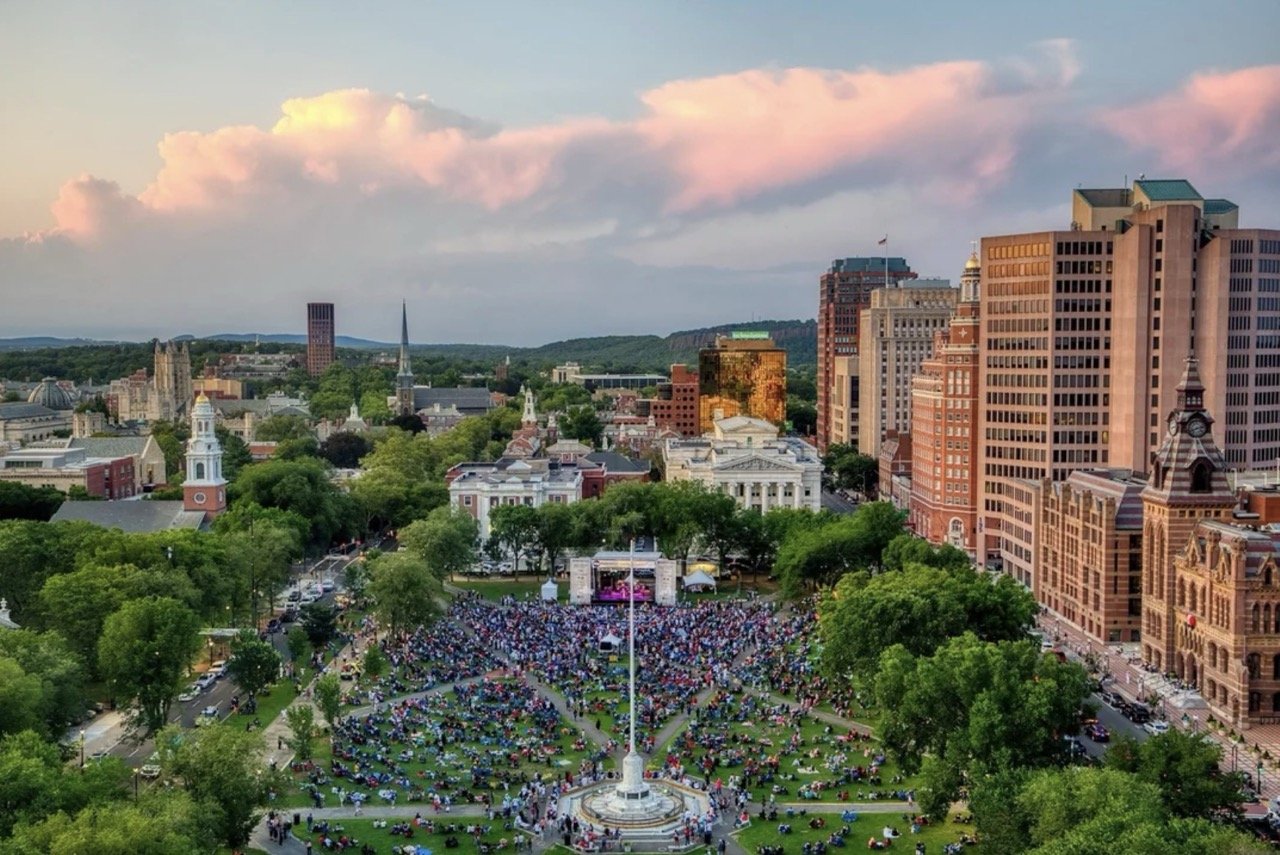
The International Festival of Arts & Ideas hosted on the New Haven Green, 250 Temple Street New Haven, CT
The Role of Outdoor Spaces in Community Building
Outdoor spaces provide a shared canvas where people of all backgrounds can come together. Parks, plazas, and greenways often serve as the "living room" of a community, offering places to relax, play, socialize, and celebrate. These spaces contribute to social cohesion, promote mental and physical health, and enhance the overall quality of life.
In the Northeast, where cold winters and hot summers define much of the year, outdoor spaces must be designed with versatility and comfort in mind. They should accommodate diverse activities and weather conditions while maintaining accessibility for all. This careful balancing act ensures that these spaces remain vibrant and well-used throughout the year.
 Manhattan’s Little Island by Heatherwick Studio. Photo by Timothy Schenck
Manhattan’s Little Island by Heatherwick Studio. Photo by Timothy Schenck
Principles of Community-Centered Design
When designing outdoor spaces that foster connection, several core principles guide the process. These principles ensure the resulting environments are inclusive, engaging, and beneficial to their communities.
1. Inclusivity and Accessibility
A community-focused outdoor space must welcome everyone, regardless of age, ability, or background. This means designing paths, seating, and activity areas that accommodate individuals with disabilities, as well as creating spaces that appeal to all demographics—from children to seniors.
For example, accessible playgrounds with sensory-friendly equipment and smooth, non-slip surfaces allow children of all abilities to play together. Similarly, wide, well-lit paths ensure that greenways are safe and navigable for pedestrians, cyclists, and those using mobility aids.
2. A Mix of Activities
Spaces that cater to a variety of activities encourage people to use them more frequently. Parks should feature areas for sports and games, as well as quiet zones for reading or meditation. Plazas benefit from flexible open areas that can host farmers' markets, live music, or art installations. Greenways can combine practical pathways for commuters with scenic routes for recreation.
By offering something for everyone, outdoor spaces become destinations where diverse groups can coexist and interact.
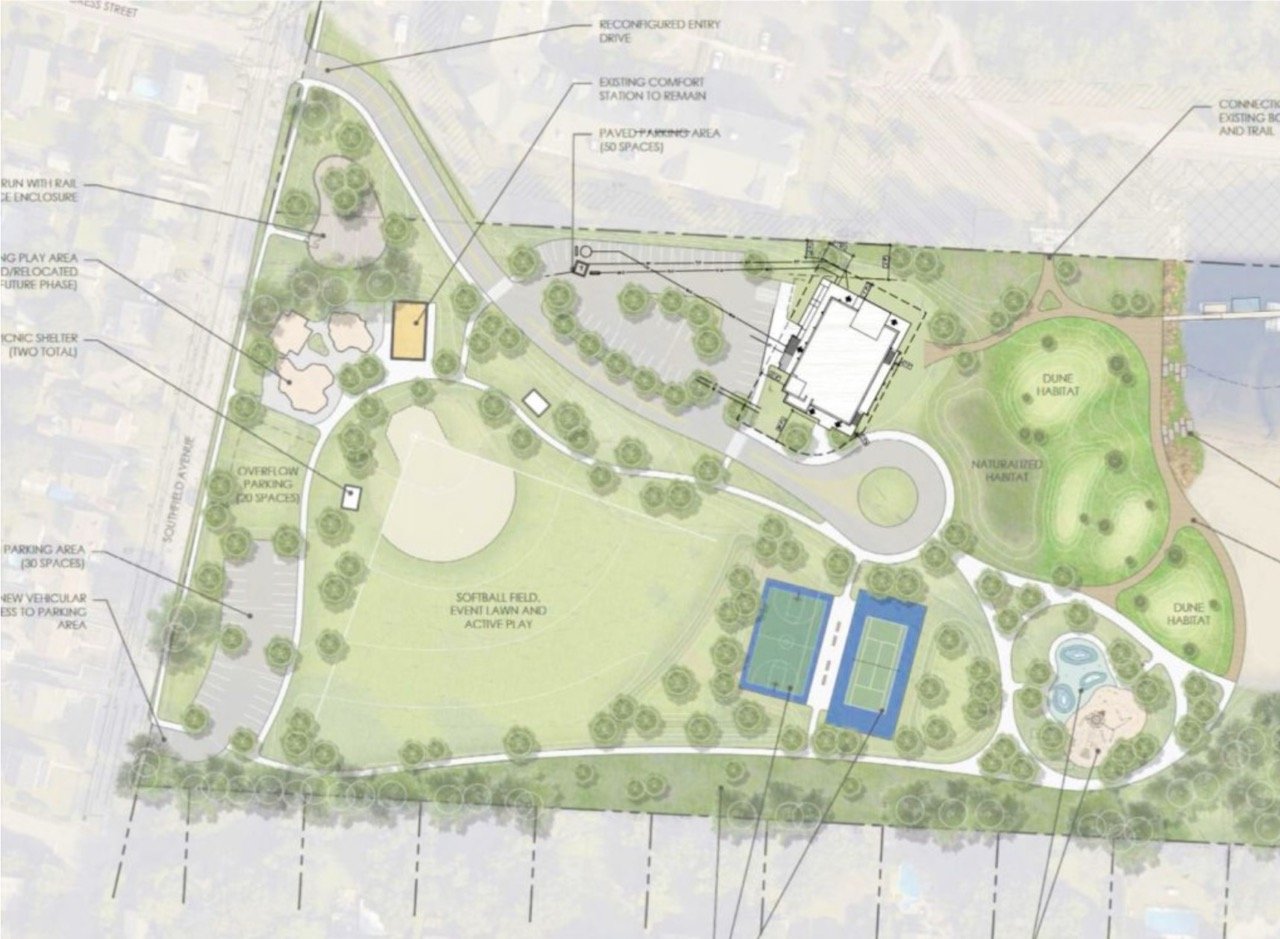
Rendering of Boccuzzi Park in Stamford, CT. Photo courtesy of Hey Stamford!
3. Connection to Nature
Outdoor spaces thrive when they bring people closer to nature. Incorporating native plants, sustainable landscaping, and water features fosters a sense of serenity while enhancing biodiversity. Greenways, in particular, serve as vital ecological corridors, connecting fragmented habitats and supporting local wildlife.
In urban areas of the Northeast, integrating greenery into hardscapes can reduce the urban heat island effect, improve air quality, and provide much-needed shade. Thoughtful planting not only improves aesthetics but also reinforces the role of outdoor spaces as a refuge from the stresses of daily life.
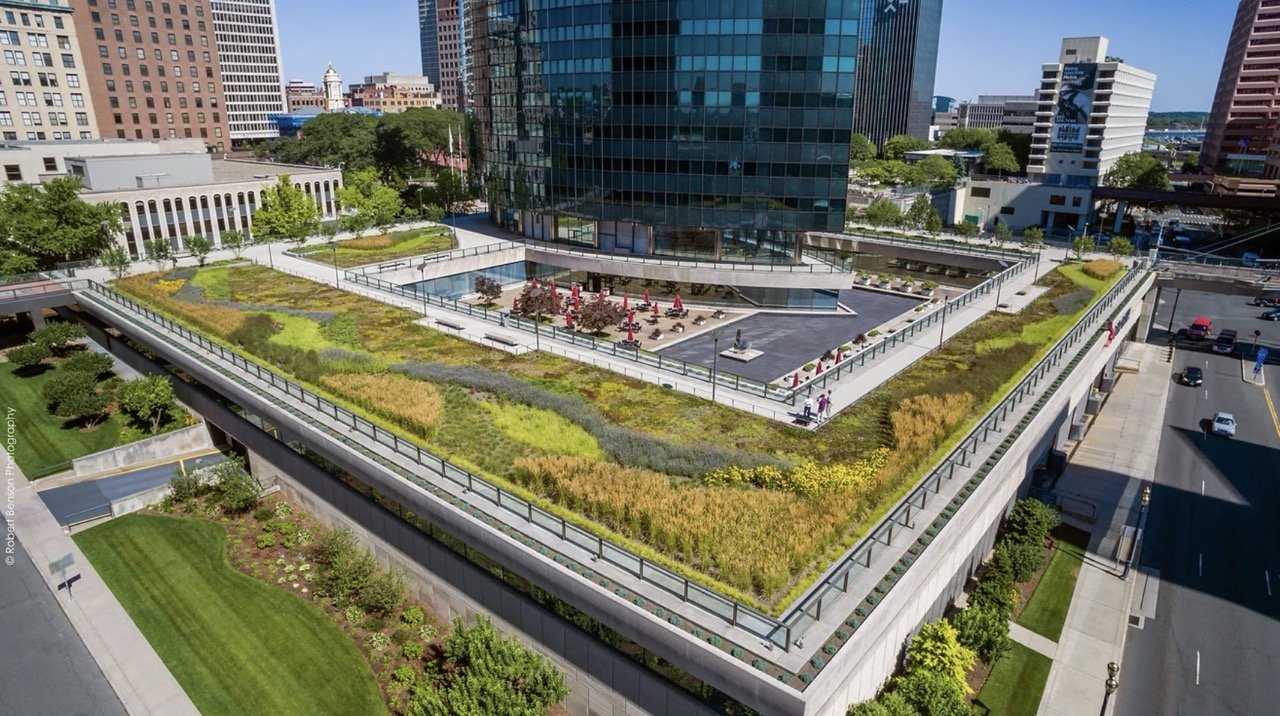
The Pheonix Companies, Inc. Hartford CT. Hoffman Architects & Towers-Golde. Photo by Robert Benson Photography
4. Sustainability and Resilience
As communities face challenges from climate change, outdoor spaces must be designed to withstand and mitigate environmental pressures. Permeable paving, rain gardens, and bioswales can manage stormwater effectively while adding visual interest. Solar lighting, drought-tolerant landscaping, and recycled materials further enhance sustainability.
In addition to environmental resilience, social resilience is critical. Spaces that adapt to changing community needs—whether by adding outdoor classrooms or accommodating food trucks—ensure their long-term relevance.
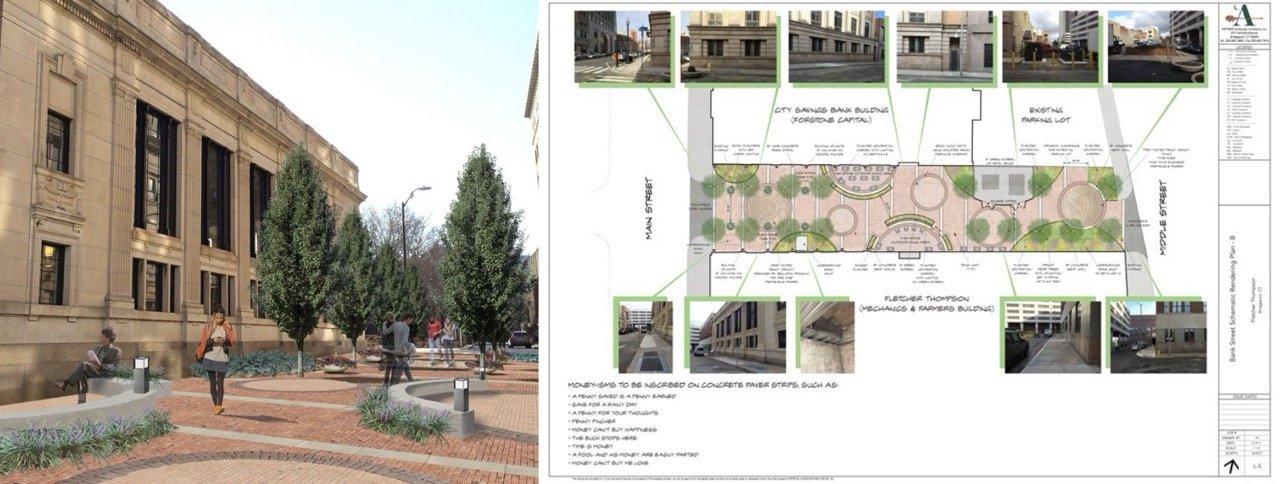
Schematic Plan And Rendering For A Pedestrian Park To Be Located Outside Of The Historic Mechanics & Farmers Bank In Downtown Bridgeport. Artemis Landscape Arhcitects, Inc.
5. Engaging Design and Identity
Design elements that reflect a community's culture and history foster a sense of ownership and pride. Public art, local materials, and thematic landscaping can turn an outdoor space into a landmark that embodies the unique spirit of its community.
For example, a plaza might feature a mural or sculpture celebrating a town’s heritage, while a park could include signage that educates visitors about native plants or historical events. Such features transform outdoor spaces into places of connection, education, and memory.
Public Parks: The Heart of Community Spaces
Public parks are perhaps the most iconic community spaces, offering green oases in both urban and suburban settings. In the Northeast, these parks often serve as year-round hubs of activity. They are sites for summer picnics, autumn festivals, winter ice-skating, and springtime nature walks.
To maximize their impact, parks should be designed with flexible zones that accommodate both programmed events and spontaneous use. Open fields can host soccer games or concerts, while shaded groves provide peaceful retreats. Incorporating elements such as dog parks, playgrounds, and community gardens ensures that everyone feels welcome and engaged.
Plazas: Dynamic Urban Anchors
Plazas are crucial in denser, urban environments where green space may be limited. These open-air gathering places are ideal for fostering social interaction and economic vitality. By including seating, shade, and interactive features such as fountains or public art, plazas encourage people to linger and connect.
In the Northeast, where weather can be unpredictable, plaza design should consider shelter and warmth. Heated benches, windbreaks, and retractable canopies can make these spaces comfortable even in colder months, ensuring year-round usability.

SoNo Station Redevelopment Norwalk, CT TOD Mater Plan Benfield Architecture
Greenways: Pathways to Connection
Greenways link neighborhoods, parks, and natural areas, creating corridors of activity and connection. These linear spaces support recreation, commuting, and ecological restoration, offering a sustainable alternative to car-centric infrastructure.
When designing greenways, landscape architects should consider their dual role as transportation routes and recreational spaces. Smooth, multi-use trails accommodate walkers, cyclists, and skaters, while scenic overlooks, benches, and interpretive signage add depth and character to the experience.
Greenways in the Northeast also play a critical role in stormwater management, often incorporating bioswales and wetlands to handle runoff while preserving natural beauty.
Measuring Success: How Outdoor Spaces Foster Community
The ultimate measure of success for a community-focused outdoor space is its ability to bring people together and enrich their lives. Well-designed spaces foster:
-
Social Connections: Parks and plazas provide neutral ground where people can meet and form bonds.
-
Health Benefits: Access to outdoor spaces encourages physical activity, reduces stress, and improves mental health.
-
Economic Growth: Vibrant public spaces attract visitors, support local businesses, and increase property values.
-
Cultural Engagement: By reflecting a community’s identity, outdoor spaces become venues for celebration and expression.
Looking Ahead: Designing for the Future
As communities across the Northeast grow and evolve, so too must their outdoor spaces. By prioritizing inclusivity, sustainability, and local identity, landscape architects can ensure that parks, plazas, and greenways remain vital to community life. These spaces are not just places to visit—they are places to belong.
By embracing the transformative power of outdoor design, we can create environments that nurture connection, inspire joy, and build stronger, healthier communities for generations to come.

